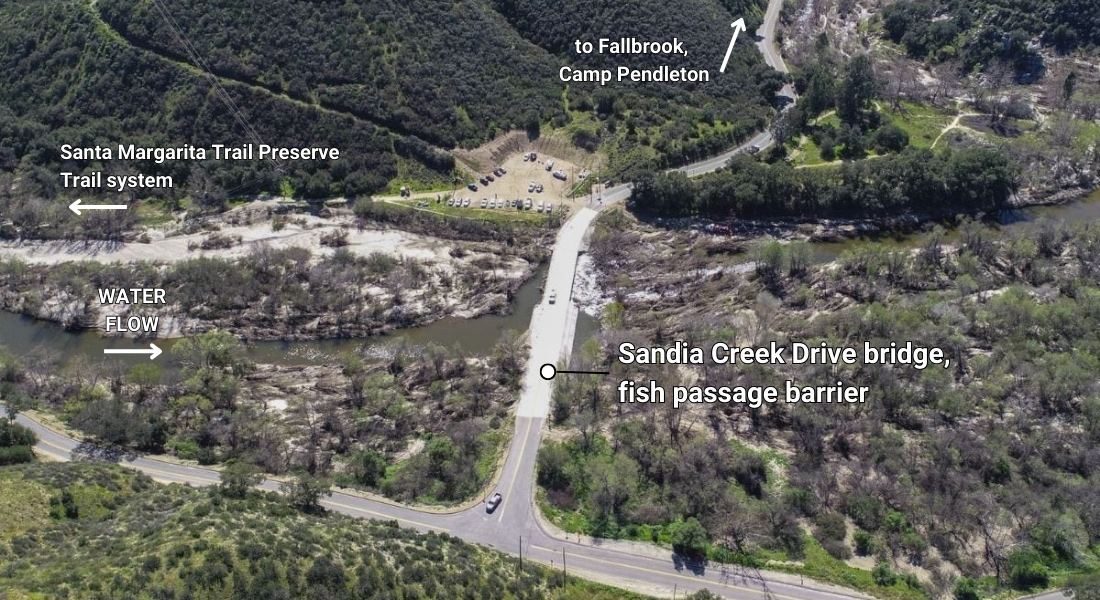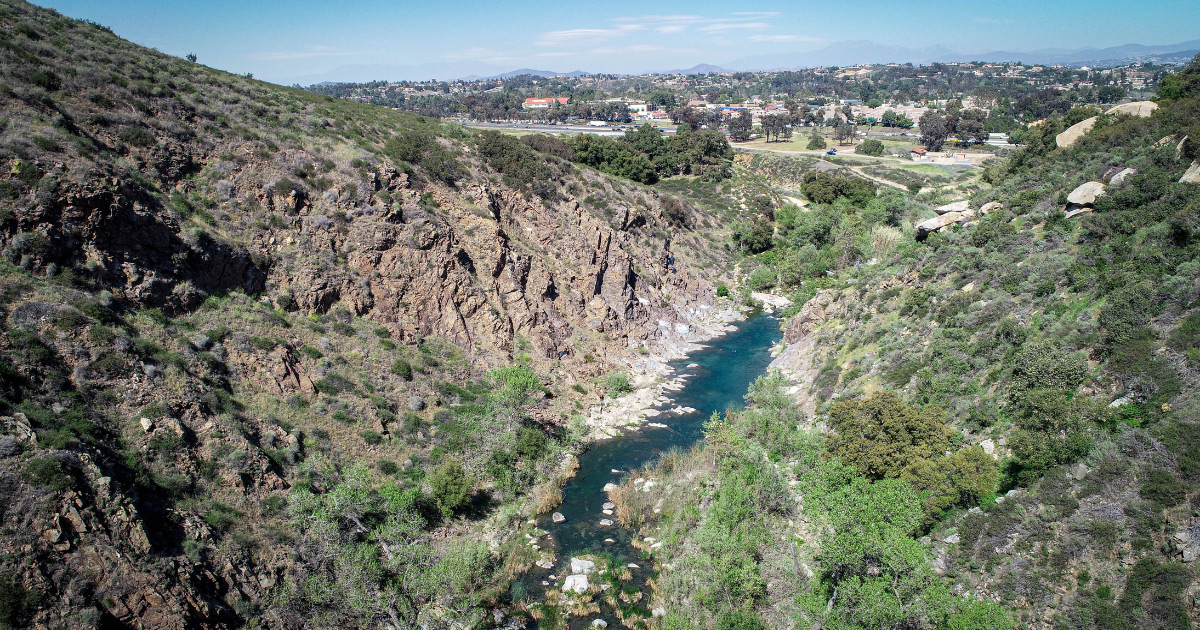New Bridge on Santa Margarita River Will Enhance Important Steelhead Migration Corridor
Today it is rare to see a Southern steelhead in the wild, but there was a time when these fish were abundant, swimming in and out of Southern California’s watersheds in the tens of thousands. CalTrout’s South Coast region team is working across the lower half of the state to provide additional opportunities for these fish to thrive in our coastal waters once again – and to prevent the irreversible loss of this iconic Southern California fish species.
Soon endangered Southern steelhead will be able to access all 29 miles of the Santa Margarita River, restoring this important historic migration corridor from headwaters to sea. In June 2024, CalTrout and our project partners will re-start construction to remove the current bridge and replace it with a new steel bridge that provides climate smart solutions for both fish and people.
The Santa Margarita River is one of the last free flowing and perennial rivers in Southern California. It drains an arid region at the southern end of the Santa Ana Mountains, flowing 29 miles through natural riparian vegetation, eventually passing through the U.S. Marine Corps base at Camp Pendleton until meeting the Pacific Ocean. Its restoration offers a prime opportunity to recover the endangered, yet resilient Southern steelhead.
What started as an essential fish passage project became a multi-benefit community resilience effort. Sandia Creek Drive is an aging box culvert structure crossing the Santa Margarita River that overtops during major rainstorms, becoming completely submerged and causing dangerous swift water conditions for automobiles. This concrete low-flow crossing is also the last remaining fish passage barrier in the mainstem of the Santa Margarita River, a high priority Southern steelhead recovery river as designated in the federal recovery plan. The existing structure lies within The Wildlands Conservancy’s Santa Margarita Trail Preserve two miles north of Fallbrook, CA in San Diego County. The new 473-foot steel bridge will not only open 12 miles of additional spawning and rearing habitat upstream but also increase safety for residents and trail users. The new bridge is designed to pass a 100-year storm without flooding, providing safe passage for the public including first responders who use this crossing as one of few along the entire river, linking Temecula with Fallbrook communities.

When construction re-starts in June 2024, it will be with a pivoted design arching over the river closer to the existing bridge structure. The original bridge alignment was re-located to cross the river just upstream using much of the same design and materials in a remarkable engineering feat of adaptive design, to honor tribal ancestral land and culturally sensitive areas. The existing road will stay operational until the new bridge is completed in June 2025, at which point the flood-prone aging concrete box culvert structure will be demolished.
The project is led by CalTrout and funded by state and federal agencies including the California Department of Fish and Wildlife, Wildlife Conservation Board, California Natural Resources Agency, State Coastal Conservancy, and the National Oceanic and Atmospheric Administration. It was developed with close review by the County of San Diego, who will own and maintain the bridge. The project re-alignment will be reviewed by many regulatory agencies through a permitting process, developed in collaboration with the Pechanga Band of Indians, and presented to the Fallbrook Community Planning Group. CalTrout will be holding public meetings in the next three months to inform residents of the new bridge construction schedule.
Explore More CalTrout Projects to Recover Southern Steelhead:
Cover Photo: Michael Wier





